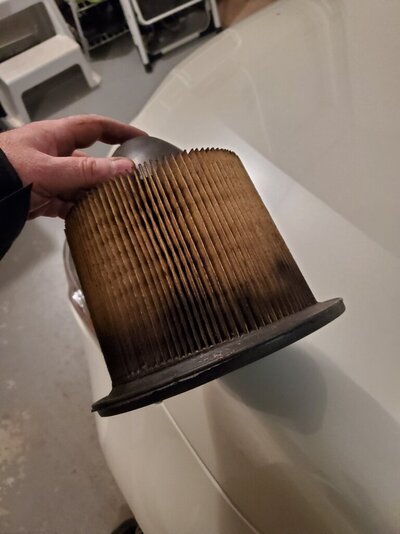Just a couple things come to the top of my mind.
Chassis -
Engine oil
Oil filter
Air filter
Fuel filter
Check plug wires
Replace serpentine belt
Inspect water pump for leaks - also inspect hoses
Flush coolant and replace thermostat.
Inspect power steering fluid. If dirty, have it flushed.
Inspect valve cover seals, plenum, and oil pan. for leaks.
Check for any leaks underneath - front cover and rear main seal
Inspect exhaust for rust - it's almost 20 years old. If not in a salt state, the exterior might look fine, but it may be nearly rusted out from the inside from condensation.
Lots of opinions on transmissions. Personally, I'd drain/fill, and drop the pan and replace the filter too. And then do it again within about 10k to get even cleaner fluid since a lot of it will be trapped in the torque converter on the first drain/fill. And then about every 25k after that - or follow the manufacturer's recommendations. But with 36k, that makes me nervous as a matter of course that it may have never been done.
Have the brakes flushed. Also inspect all the hard lines for rust, rubber lines for deterioration. Inspect brake calipers, pistons for leaking at the wheel. Inspect brake linings for adequate pad life. Inspect park brake cable or system and adjust if needed.
Check any serviceable wheel bearings. If easy, repack.
Drain/fill the rear axle. Inspect for any leaks at the cover and axle seals.
Consult the owner's manual for any grease fitting locations on driveline or suspension, grease as needed with the correct grease***
Inspect the shocks for any leaking. How does it ride? If you get a lot of pogo motion going down the road they might be shot.
Tires - you mentioned they are all new. It's worth learning the correct inflation PSI for how heavy your RV is. It involves weighing out the axles on a scale and adjusting accordingly. It's ultimately worth it for both tire longevity and ride.
YOUR GENERATOR should also be gone through. The model number should be on the case. Googling that should find you a manual. I've bought "OE" Green-label Onan parts from this site before. Not the cheapest but great service / response.
https://www.cumminsonanstore.com
Coolant flush
Fuel filter, Air filter, oil filter. They can have drive belts too.
Inspect the exhaust for leaks or rust
Check cable connections for corrosion.
Lube the door hinges, hood, locks, check the wipers and washer reservoir.
If you've got caulking around lamp lenses, that should probably be addressed at some point. The plastic deteriorates and moisture gets inside around the seals which can corrode the connection with the bulb and may blow a fuse. All those exterior lamps are available online and usually for super-cheap, just have to look around for the right style and manufacturer.
Once you get the truck in order, then it's on to the house!!


